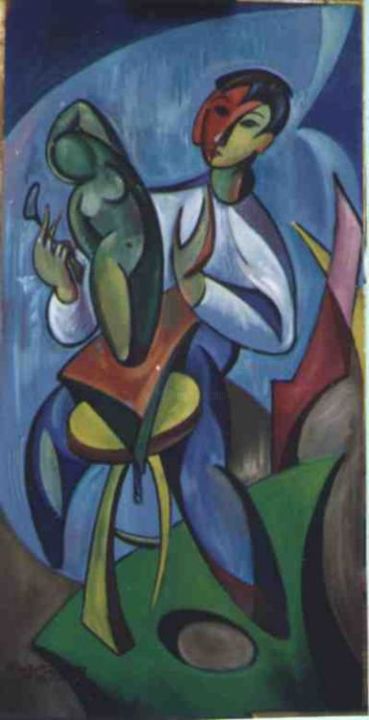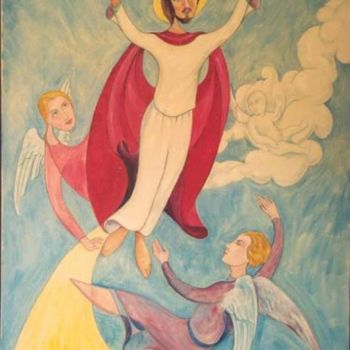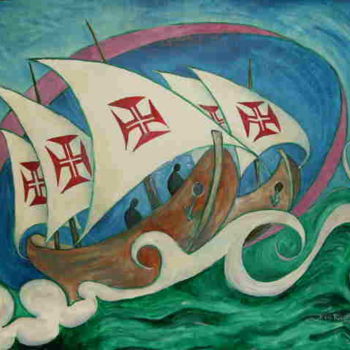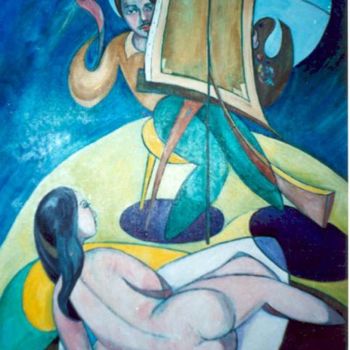THE PAINTER RODOLFO PASSAPORTE
Portuguese-Spanish painter born in 12 June 1927, in a very typical Madrilène street, in the “calle” Cardenal Mendoza, number 3, in the neighbourhood of Arguelles, son of Portuguese father and Spanish mother.
The Civil War in Spain (1936-1939) has deeply marked his childhood and the moments under these three years were registered in his memory and, in a way, shaped his character. During this period he wrote his memoirs from the War, which he illustrated himself.
In 1939, when the war was already over, Rodolfo Passaporte and his family moved to Lisbon.
At the age of thirteen, and given his artistic capacities, he frequented the Decorative Arts School António Arroio. There, he attended the Fine Arts qualification course, where he learned the technique to draw coal, with a final grade of 16*.
After he frequented a Painting course in the Superior School of Fine Arts in Lisbon, ending his studies in 1959, with a final grade of 16* in the Painting Special Course, with a grade of 19* in the Painting Superior Course and with a grade of 18* when defending his Thesis – he painted the harvesters ladies from Alentejo, which he entitled “Our Bread…”.
When painting the human being he stresses the importance of “seeing” the psychological profile and then express it in a face, in the hands, or in the attitudes of the persons he paints, who usually are persons he meets in his daily life or in his creative imagination.
The subjects he paints vary from the regional landscapes, the Greek mythology, historic and religious themes, portraits, still nature, landscapes from places he lived in, to subjects connected with professions and symbols of psychological and spiritual values.
Multifaceted plastic artist, he has an extensive work that includes several techniques varying from drawing, coal and pastel, water colour, gouache, oil, spatula, China-ink, to mural painting, scenery making, illustration, graphic and furniture design, advertisement, chiselling, medal making and sculpting.
His art undergoes three distinctive phases. Initially he is realist, of neo-classical influence; then he changes to a modernist period, where he starts to stylise the shapes, turning the landscapes in geometrical shapes, until he arrives to a style he created in 1973, the Curvilinismo – which was presented with a manifesto and it is based in the consonance of curbed lines, suggesting a variety of shapes departing from interlaced limited lines of figures, objects and landscapes, to create an ambivalent symbolic nature in his compositions. This style emerges as opposition to cubism. As for the colours he uses, he usually uses hot colours, maybe influence from his Spanish descendent. Besides being a painter he also taught Drawing and Painting for several years. He has prepared many students for Fine Arts and many of his disciples followed the artistic life.
He presented many colloquies, informal conversations, and he has written severa...









